It was one of those fortuitous incidents. For my next subject aircraft, I chose the Altus motorglider because this particular aircraft was personally intriguing to me. I enjoy soaring, gliders, and therefore motorgliders. However, it’s not an ego thing. Motorgliders have a very special niche in American aviation. I’ll get to that below.
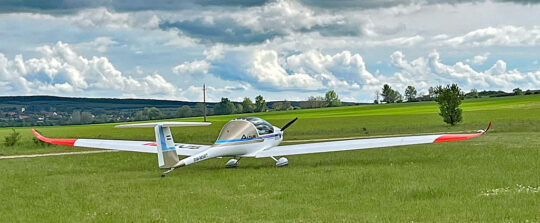 What made this choice of topics lucky was that as I was doing some investigation of this company and aircraft, I reached out to a local aviator who hails from the same country: Hungary. His name is Doma Andreka and he is the importer of Magnus Aircraft and its aerobatically-capable Fusion.
What made this choice of topics lucky was that as I was doing some investigation of this company and aircraft, I reached out to a local aviator who hails from the same country: Hungary. His name is Doma Andreka and he is the importer of Magnus Aircraft and its aerobatically-capable Fusion.
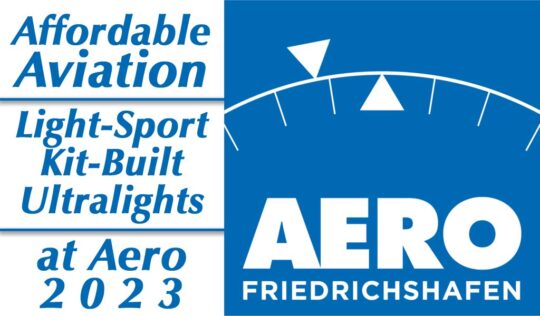 He is also part of Aero Affinity, which helps international companies make inroads to the complex American recreational aircraft market. At Aero 2023, Doma and his former countrymen came to preliminary agreement. With steady progress, Altus may be available to Americans by next year. Given that many manufacturers are already quoting deliveries well into 2024 or later, being ready in a year is quite an accomplishment.
He is also part of Aero Affinity, which helps international companies make inroads to the complex American recreational aircraft market. At Aero 2023, Doma and his former countrymen came to preliminary agreement. With steady progress, Altus may be available to Americans by next year. Given that many manufacturers are already quoting deliveries well into 2024 or later, being ready in a year is quite an accomplishment.
Welcome Altus!
How’s this for a summary? — 5 FAI World Records; 1,000 statute mile range; 120 knot cruise; 500 foot takeoff roll; 573 pound useful load; 110 pounds of luggage; and easy to fly. Maybe I should stop writing now? Maybe that’s all you need to hear.
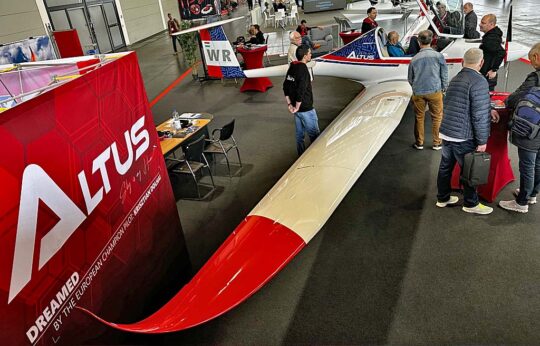
Given a substantial versatility and range with “easily changeable wing extensions,” you can have either a 36-foot-span speedster or a 49-foot soaring motorglider.
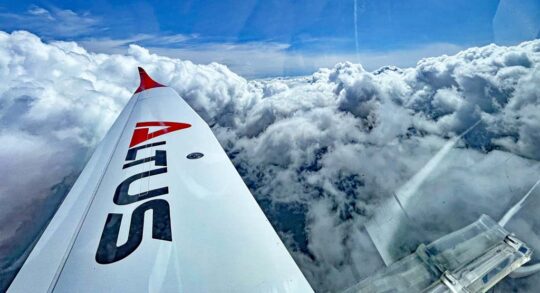
During development, champion pilot and developer Krisztián Dolhai, also flew several FAI records including speed over a closed course and straight line. While Altus is a motorglider at heart, it scoots right up to the LSA speed limit.
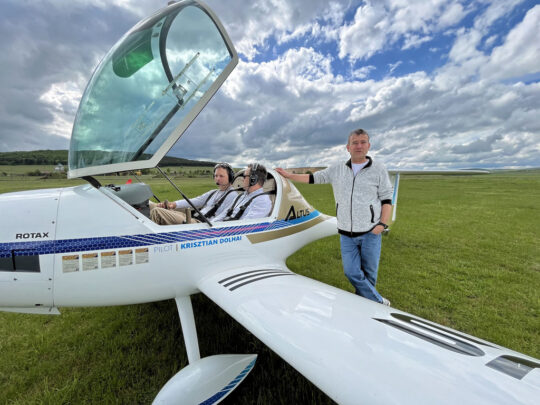
Designer Krisztián Dolhai (right seat) prepares to demonstrate Altus, while investor Árpád Barabás observes.
Altus does not currently qualify as a Special LSA but I expect to learn more about plans being announced as summer begins. Doma noted, “Altus is heading to the U.S. later this year and will be based out of Florida with a new Sales and Service Center to serve customers.”
Common on European designs is the input of some university or engineering company. Such outside organizations can provide additional expertise that verify the concepts of the designer. In the case of Altus, designer Krisztián Dolhai contracted with eCon Engineering. Such a relationship produces a statement like this, “During the development phase and also today we cooperate with eCon Engineering Kft. In a recent project, they developed a 3D-corrected Virtual Blade Model (3D-VBM) utilizing artificial intelligence which accurately simulates the propeller induced flow and propeller-airframe interaction phenomena.” Got that?
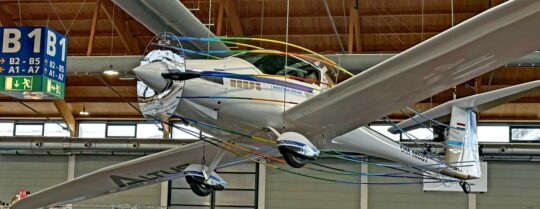
It’s too early to get into price and further details about Altus. After this introduction, more will follow, perhaps later this month.
TECHNICAL SPECIFICATIONS
Altus Motorglider
all specifications provided by manufacturer
(see downloadable brochure for more)
- Never Exceed Speed (Vne) — 146 knots
- Maneuvering Speed (Va) — 97 knots
- Rough Air Speed (Vra) — 121 knots
- Range — 860 nautical miles
- Fuel Capacity — 26.4 gallons
- Takeoff Roll — 490 feet
- Climb Rate — 1,400 feet per minute
- Luggage Capacity — 110 pounds
- Maximum Takeoff Weight — 1,320 pounds
- Wingspan — 36 or 49 feet (with “easily changeable wing extensions”)
- Load Factor — +5.3 –2.65 G
- Powerplant — Rotax 912 ULS
What’s Special About
Motorgliders?
“Glider … pilots are not required to hold a medical certificate of any class,” stated FlightPhysical.com. “To be issued a Glider … Airman Certificate, applicants must certify that they do not know, or have reason to know, of any medical condition that would make them unable to operate a glider or free balloon in a safe manner. This certification is made at the local FAA FSDO (not through an AME office).”
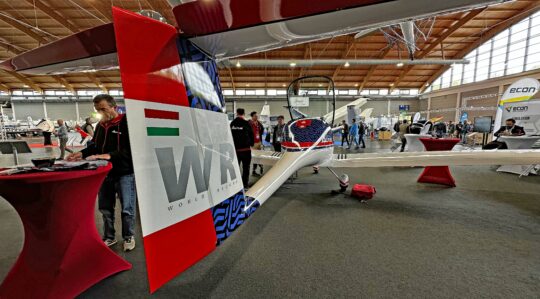
A key point Jim makes, “[Motorgliders offer an] ability to fly without a medical certificate. Since they are gliders, there is no provision for denial of this privilege in the event that a medical certificate has been previously denied, as in Light-Sport Aircraft.”
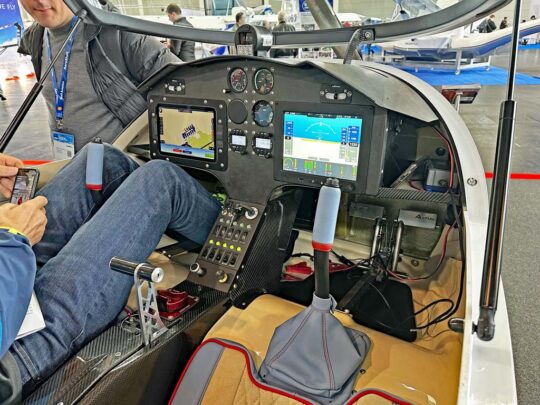
This is not a total FAA giveaway, though. As Jim noted, “Since motorgliders are certified as self-launching gliders, you have to have a glider rating to carry passengers. This isn’t a big issue. For a private pilot converting to gliders, a minimum of 10 solo flights are required to qualify to take the glider flight test. No written exam is required – just a flight test – and it counts as a biennial flight review.”
In addition, motorgliders do not have speed limits or other restrictions imposed on LSA. Along with hot air balloons, motorgliders remains a segment where FAA keeps a relatively hands-off approach. (And, wonder of wonders… both activities enjoy good safety statistics even without regulators playing much of a role.)
Watch for more on Altus as they plan their approach to the U.S. market.
ARTICLE LINKS:
- Altus, factory website
- Altus brochure, beautiful product brochure with many great images, link to PDF
- U.S. import associate, Magnus Aircraft
- More motorgliders, in an article on this website


Dan, Do you know if there will be a nosewheel version or a folding wing version?
Years ago, I had a very early Taifun 17 E. Tricycle retractable gear, roomy two seater and heavy folding wings. Top cruise was 112 knots, cruise 85. This was way before carbon fiber!
I believe I did hear some talk about a tricycle gear version. It is a motorglider and the developer, although a soaring enthusiast himself, is well aware that most customers will fly it under power most of the time, so tricycle gear is not unreasonable. I don’t recall any talk about folding wings but these long-span machines are usually removable in some form.
I personally was at the Aero 2023 and I can confirm that the Altus has tricycle gear. I have a photo of it.
Thanks Tim… I did not know a 912 allowed for feathering. Nice plane.
Haven’t seen an L/D max anywhere in the specs, do you know what it is?
It was curious this specification was absent. Use links in the article to contact the company or its U.S. partner, Aero Affinity.
Dan;
Great article! I’m an avid Glider pilot (PIK-20E, self-launch) and motor glider pilot (Pipistrel Sinus Flex) and it is great you are informing GA pilots about the glider option.
To help answer the rating questions, go to: https://www.soaringsafety.org/publications/MG-certs.pdf
TY
Tim
Looks good, where and whom to contact in Florida?
Contact Magnus Aviation — a link was provided at the end of the article.
…continued
Well, the article by Jim Hanson in the Midwest Flyer did not answer my question so I would be grateful if you could.
Thank you
I did spend some time looking for that specific inquiry, but found nothing in support of flying solo without a glider rating. I suspect there’s not much way around the 10 flights that can get you a glider rating. However, those 10 flights should be very useful to preparing for flight in a long-gliding aircraft like Altus.
Perhaps someone else knows more about your question, and they may answer…
Meanwhile, I recommend you check out this page for motorgliders.
Thank you for your answer Dan!
I certainly do not disagree that a glider rating is useful and should be obtained but the way Jim’s comment was made it, like I said, implied that for not flying passengers, the regs allow to fly without .
You wouldn’t have Jim’s email address so I could ask him directly, would you?
Please do more than the 10 required flights in a pure glider. From my experience, a power pilot will not learn to thermal and to fly a proper pattern in so few flights.
The requirement for 10 flights is simply to get a certificate and is not enough to develop great techniques.
” As Jim noted, “Since motorgliders are certified as self-launching gliders, you have to have a glider rating to carry passengers.” This implies that one does NOT need a glider rating when flying solo.
Is that right? What rule(s) apply to allow that?
Maybe it’s in the article in Midwest Flyer from 2014 that you refer to. I will check that.
If you have a Private, you need an endorsement to fly a glider solo, but you do not need a glider rating. This does make sense: student pilots getting their glider ratings also fly the glider solo before getting their glider rating. As a Private pilot, you do not need a student pilot certificate; in other respects, you’re in the same boat as a student pilot. But, since constantly renewing the endorsement would be inconvenient, even if you planned to only ever fly solo, it would make sense to get the rating.
Dang, nice numbers on this plane, and it looks nice too. I did not know that no medical is needed for motorgliders! I wonder why it does not come with a folding prop, to give it the best soaring capability possible?
Thanks again, Dan.
Michael;
The prop feathers.
Folding props are used in the Stemme and some pusher motor glider configurations. In general tractor configurations tend to use a feathering prop and the Rotax 912 series gearboxes have the option for the hollow prop shaft to support feathering and inflight adjustable props.
Tim